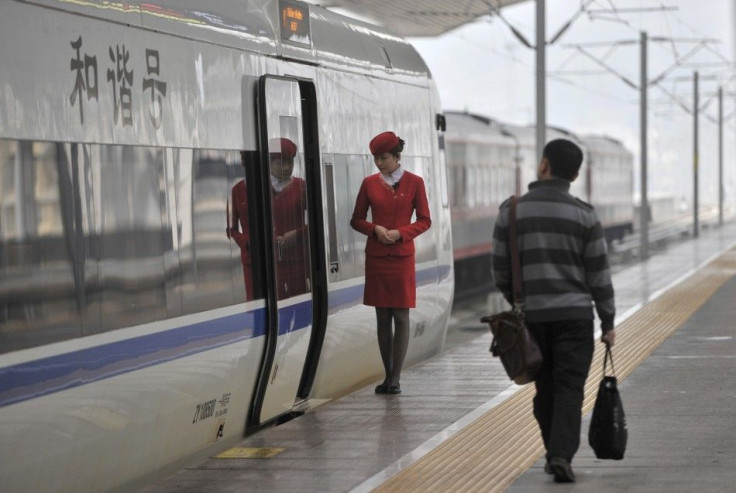High Speed Rail: 5 Things to Know About Proposals To Install it in the U.S.

President Barack Obama is on record as proposing a high-speed rail system that will, within 25 years, serve 80 percent of Americans. And Washington's 2012 budget shows the the president is putting his money -- or at least taxpayer money -- where his mouth is.
Obama called his initiative, which he proposed in April 2009, the nation's largest investment in infrastructure project since the Interstate Highway System, and he initially provided $10.1 billion in Recovery Act funds towards the goal.
Though it will be years before the vision is fulfilled, here are answers to the five most common questions people have about high-speed trains in the U.S.
1) So how fast are we talking?
High-speed trains, or bullet trains, in Europe and Asia travel at an average speed of 186 miles an hour but have been tested to run a lot faster. Obama's project envisions trains that could travel up to 220 miles an hour.
2) Are high-speed trains really more efficient than planes and cars or buses?
It depends on the distance. High-speed trains are more efficient than either planes or road vehicles on trips of 200 miles to 500 miles, the Federal Railroad Administration said.
One reason for the superiority of high-speed trains for trips of such length is their ability to pick up and drop off passengers in the heart of cities. That saves passengers the headaches, expense and time of finding a taxi to get from the airport into the city.
3) Where will these high-speed trains run?
They will run regionally, not nationally. In other words, don't expect to be able to get on a train in Los Angeles and get off in Manhattan.
What you can expect is getting from one big city, say Chicago, and zipping along to another in the same general area, say, Washington D.C., or St. Louis., said Warren Flatau, a spokesman for the FRA.
Four specific regions are slated for high-speed trains: the Midwest, linking St. Louis to Chicago and Detroit; the Southeast, including Louisiana and parts of Texas; the Eastern Seaboard, linking Maine to South Carolina; the Midcontinent, linking Texas to Oklahoma and Arkansas region; and a West Coast system linking San Diego to San Francisco and Seattle to Eugene, Ore.
Work is already being done on lines linking St. Louis to Chicago and Detroit.
4) Can existing railroad tracks be used?
Yes, much of the time. And where it is not possible to use existing tracks, new, purpose-built tracks will be laid down alongside existing track, an approach made possible because railroad right-of-ways tend to be big enough to handle parallel tracks, said Flatau.
5) Is there opposition to this?
Yes, and it comes from cash-strapped local governments.
The initial $10.1 billion being provided for the project is divided among 34 states so each can build its own section of the high-speed rail system. In the Department of Transportation's 2012 budget, the Obama administration is set to provide an additional $53 billion over the next six years.
But that's not nearly enough for many cities and states. For example, local governments in California including Wasco City, Bakersfield, Tulare County and Kings County think the venture too expensive, and in recent weeks voted the project down.
In the last year, the Florida did the same, with some officials calling the project a train to nowhere.
© Copyright IBTimes 2024. All rights reserved.





















